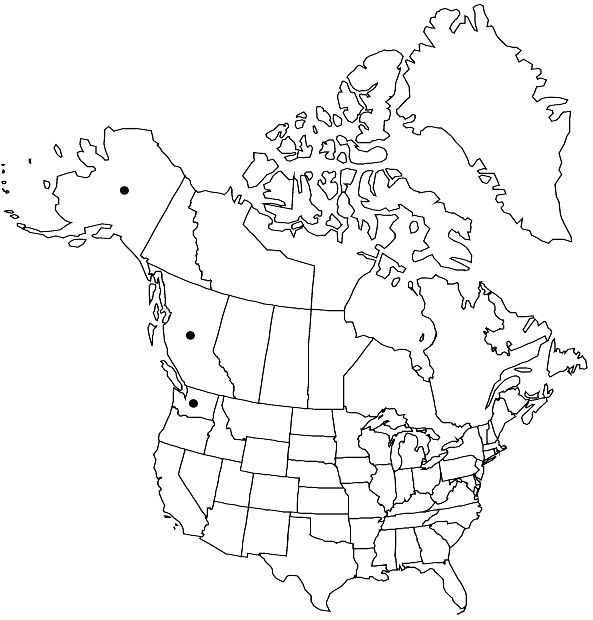Schistidium strictum
Kungl. Svenska Vetenskapsakad. Avh. Naturskyddsärenden 14: 110. 1956,.
Plants in open tufts or mats, usually rusty red-brown, rarely black or olivaceous. Stems 1–5(–11) cm, central strand absent or indistinct. Leaves erect or curved, usually imbricate below stem apex when dry, narrowly ovate-lanceolate to ovate-lanceolate, sharply keeled distally, 1.4–2.8 mm, 1-stratose, sometimes with 2-stratose patches distally; margins usually recurved to just before the apex, usually denticulate distally, 2-stratose or multistratose, sometimes 1-stratose; apices acute; costa percurrent or excurrent as a denticulate, occasionally decurrent, usually short awn, abaxial surface papillose; basal marginal cells quadrate or short-rectangular; distal laminal cells ovate or short-rectangular, 8–10 µm wide, papillose, sinuose. Sexual condition autoicous. Capsule dark red-brown, usually cupulate, 0.7–1.2 mm; exothecial cells mostly isodiametric, quadrate or irregularly angular, thin-walled or unevenly thick-walled; stomata present; peristome squarrose to revolute, twisted, red, 330–550 µm, papillose, entire or weakly perforated. Spores 10–15 µm, granulose or verruculose.
Phenology: Capsules mature late spring to early summer.
Habitat: Rock in open to shaded habitats
Elevation: low to moderate elevations (0-400 m)
Distribution

B.C., Alaska, Wash., Europe.
Discussion
Although this species has been reported widely across North America, it appears to be restricted to the northwestern portions of the continent. See comments under 5. Schistidium boreale regarding differences among S. strictum and other North American species of the genus with papillose laminal cells.
Selected References
None.